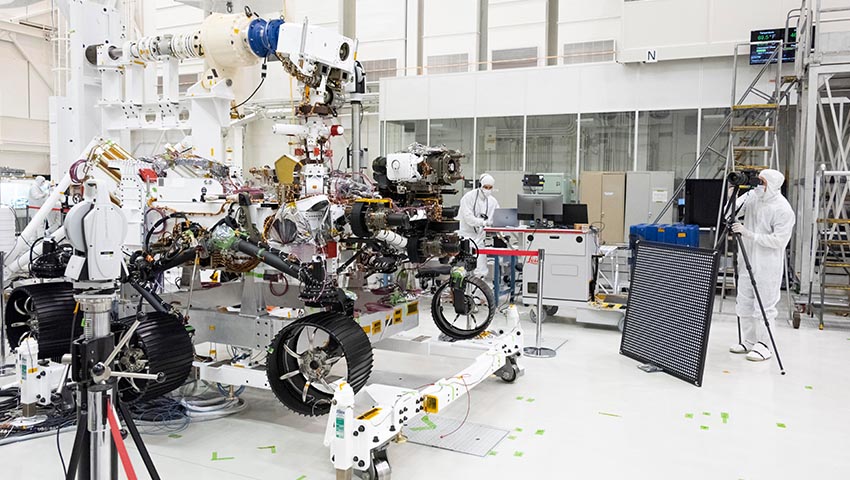Next year, the Mars 2020 will start its journey from Earth, joining the Curiosity rover in the mission of exploration.
The NASA Jet Propulsion Laboratory, which conducts these missions, said Curiosity and Mars 2020 followed earlier rover missions Spirit and Opportunity, which landed in 2004.
Spirit was active until 2010 and Opportunity until 2018.
That leaves the Curiosity rover, which landed in 2012 and remains active.
“Curiosity won't be NASA's only active Mars rover for much longer. Next summer, Mars 2020 will be headed for the Red Planet. While the newest rover borrows from Curiosity's design, they aren't twins,” JPL said.
Twin rovers Spirit and Opportunity discovered evidence that Mars once hosted running water before becoming a frozen desert.
Curiosity aimed to find out more, discovering an ancient lake in the Gale crater and an environment that could have supported microbial life.
Mars 2020 will launch in August 2020 and land in February 2021 in the Jezero crater, more than 6,000 kilometres from Curiosity.
It will look for actual signs of past life and taking samples of rocks and soil which could be retrieved in future missions and returned to Earth for detailed study.
JPL provided a rundown on the two rovers.
Mars 2020 chassis is slightly bigger than Curiosity and heavier – 1,025 kilograms against 899 kilograms. That’s because Mars 2020 carries additional tools.
Curiosity’s robotic arm extends 2.2 metres and features a 30-kilogram turret equipped with camera, chemical analyser and drill. That can lab pulverise rock samples for onboard analysis.
The Mars 2020s arm has the same reach but a larger turret and more capable drill.
Curiosity features 17 cameras on its mast, four of them producing colour images. Mars 2020 has 23 cameras, most colour.
Mars 2020 also has ears – a pair of microphones to capture not only the first sounds of a Mars landing but also Martian wind.
The improved mast camera has a zoom capability and will take high-definition video and panoramas.
Curiosity’s experience of traversing the Mars surface has better prepared the Mars 2020s team for "off-roading" on the Red Planet.
When holes began appearing in Curiosity’s aluminium wheels, engineers realised that sharp rocks on the Martian surface exerted more pressure on wheels than expected.
Careful route planning, along with a software upgrade, will keep them in shape for the rest of Curiosity's journey. The Mars 2020 wheels are also aluminium but more robust.
JPL said Mars rovers don't drive themselves. Scientists and engineers beam meticulously programmed task lists to them at the start of each Mars day. Rover drivers on Earth then wait for the vehicle to report back before planning the next drive.
After Curiosity landed, it took an average 19 hours for the team to analyse a day's data, build and test commands, then transmit those back to the rover.
Years of practice has reduced that to seven hours. A limited degree of auto-navigation has enabled Curiosity to take some cautious steps on its own.
Mars 2020 has even more self-driving capability, allowing it to calculate a path five times faster than Curiosity.
That self-driving will be key to condensing the amount of time it takes for the 2020 team to plan each day's operations. The new mission intends to eventually condense daily operations to just five hours, allowing more ground to be covered and more samples gathered.

